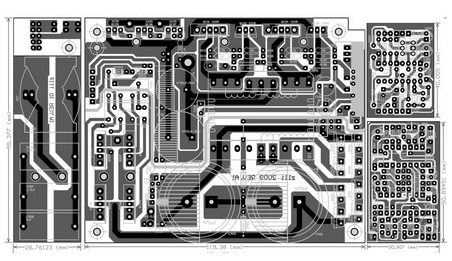I believe everyone has heard about the three-proof paint process. The PCB circuit boards that have used the three-proof paint have waterproof, moisture-proof, and dust-proof performance, and the performance of resistance to cold and heat shock and aging is relatively excellent. Generally speaking, the three anti-paint processes include brushing, spraying, automatic dipping, and selective coating. Each has its own characteristics. You can choose the appropriate process according to the actual situation. The spraying of three-proof paint is very technical. The following smt chip processing manufacturers will introduce the spray paint requirements, operations and quality requirements of spray paint.
1. Requirements for painting
1. Spray paint thickness: The paint film thickness is controlled within 0.05mm-0.15mm, and the dry film thickness is 25um-40um.
2. Secondary coating: In order to ensure the thickness of the product with high protection requirements, the secondary coating can be carried out after the paint film is fixed (determine whether to carry out the secondary coating according to the demand).
3. Inspection and repair: visually check whether the coated circuit board meets the quality requirements, and repair the problem. For example, if the pins and other protected areas are stained with three-proof paint, use tweezers to hold a cotton ball or clean cotton ball dipped in the washing board water to clean it. When scrubbing, be careful not to wash off the normal paint film.
4. Replacement of components: After the paint film is cured, if you want to replace the components, you can do as follows: (1) Directly solder the components with electric ferrochrome, and then use a cotton cloth dipped in board water to clean the surrounding material of the pad; (2) Welding substitute components; (3) Use a brush to dip the three-proof paint to brush the welding part, and make the paint film surface dry and solidify.

2. Operational requirements
1. Three anti-paint workplaces are required to be clean and dust-free, and there must be good ventilation measures, and irrelevant personnel are prohibited from entering.
2. Wear masks or gas masks, rubber gloves, chemical protective glasses and other protective equipment during operation to avoid injury to the body.
smt patch processing factory
3. After the work is completed, clean the used tools in time, and close and tightly cover the container with the three-proof paint.
4. Anti-static measures should be taken for the circuit boards, and the circuit boards should not be overlapped. During the coating process, the circuit boards should be placed horizontally.
Three, quality requirements
1. The surface of the PCB board must not have any flow of paint or dripping. When the paint is painted, be careful not to drip to the partially isolated part.
2. The three-proof paint layer should be flat, bright, and uniform in thickness to protect the surface of the pad, patch component or conductor.
3. The surface of the paint layer and components must not have defects such as bubbles, pinholes, ripples, shrinkage holes, dust, etc. and foreign objects, no chalking, no peeling phenomenon, note: before the paint film is dry, do not touch the paint at will membrane.
4. Partially isolated components or areas cannot be coated with three-proof paint.
5. If the conventional non-coatable devices in the regulations need to be coated, they can be coated by the three-proof coating specified by the R&D department or the drawings.
The above is some knowledge about the three-proof paint spraying process introduced by smt chip processing manufacturers. Generally, brushing is to use a more common painting method, which can reflect a better coating effect on a smooth surface. Spraying has greater requirements for operation and requires good accuracy, and when there is no three-proof paint Shadows may be produced in places. Automatic dip coating can ensure the film and will not cause material waste, which is also a good choice.